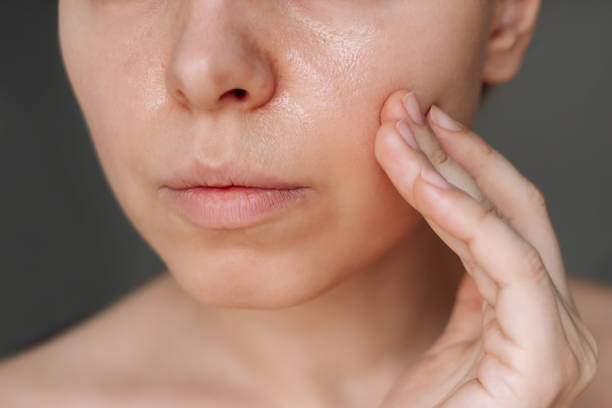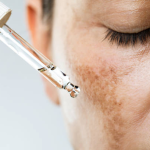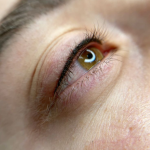For those with oily skin, maintaining flawless makeup throughout the day can be a formidable task. The main topic of this article addresses this widespread issue and offers a practical guide to enhance makeup longevity on oily skin. By understanding the unique challenges oily skin presents and implementing specific techniques, you can achieve enduring beauty. This comprehensive article will provide you with essential tips and strategies for prepping your skin, applying makeup correctly, and ensuring it stays put from morning until night.
Understanding Oily Skin and Makeup Challenges

Oily skin occurs due to hyperactive sebaceous glands that produce an excess amount of sebum. While sebum is crucial for maintaining skin health, too much can lead to a greasy surface, causing makeup to break down faster than it would on dry or normal skin. Factors influencing oil production range from genetics to hormonal changes and even stress. By recognizing what drives your skin’s oiliness, you can tailor your skincare and makeup routines for better control.
Individuals with oily skin often deal with makeup that slides off, oxidizes (changes color), or accumulates in pores and fine lines throughout the day. This can result in a look that appears smudgy or uneven, far from the polished finish desired. The challenges extend to eye makeup that smears and faces makeup that loses vibrancy. Identifying high-performance products and application techniques specifically for oily skin can help alleviate these issues.
Preparing Your Skin for Long-Lasting Makeup

A thorough skincare routine lays the foundation for makeup that lasts. Start with a gentle cleanser to remove impurities and excess oil. Regular exfoliation can help clear out pores, while a light, oil-free moisturizer will hydrate your skin without adding additional shine. This pre-makeup ritual not only helps in controlling oil but also creates a smoother canvas for makeup application.
Primers are pivotal in a long-lasting makeup routine, particularly for oily skin. They can fill in pores, control shine, and provide a grip for foundation to adhere to. Look for primers that are mattifying and formulated to manage oil. Apply it by focusing on areas prone to oiliness, such as the T-zone, for targeted oil-control.
| Primer Type | Benefits | Application Tips |
|---|---|---|
| Silicone-based | Fills in pores for a smooth surface | Apply with dabbing motion for targeted coverage |
| Water-based | Feels lighter on the skin, less likely to clog pores | Use all over the face for balanced oil control |
| Mineral-based | Natural oil-absorption properties | Concentrate on the T-zone and blend outwards |
Makeup Application Tips for Oily Skin
For foundation and concealer, those with oily skin should prioritize products labeled ‘oil-free’ and ‘non-comedogenic.’ These formulations are less likely to contribute to additional shine or clog pores. When applying foundation, use a blending sponge or brush for an even, lightweight application. Set everything with a natural matte or translucent powder to lock in coverage and combat shine.
Setting Your Makeup to Last
An essential step for making sure your makeup stays faultless is setting it correctly. Consider using a finely milled setting powder to mitigate shine and ensure everything stays in place. A setting spray can add an extra layer of protection against oil breakthrough. Spritz on in an X and T pattern to evenly distribute the product.
- Start with a primer designed for oil control.
- Use an oil-free foundation and concealer.
- Apply a setting powder, focusing on the T-zone area.
- Finish with a long-lasting setting spray.
Keeping Your Makeup Fresh Throughout the Day
For touch-ups on the go, blotting papers are a must in your makeup arsenal. However, it’s also valuable to have a compact powder for moments that require a little extra coverage. Make sure the powder is translucent or matches your skin tone to prevent a heavy, cakey appearance. Light patting motions will help to absorb oil without disturbing your beautifully applied makeup.
Blotting Techniques and Tools
Blotting papers are designed to gently lift excess oil from the skin without smudging your makeup. Press the paper against the skin and roll it off rather than wiping to maintain your makeup’s integrity. For heavier oil production, a light dusting of powder can be applied after blotting to keep that matte finish without buildup.
Here’s a simple list for midday touch-up essentials:
- Blotting papers to combat shine without disrupting makeup
- Compact powder for additional coverage if needed
- Mini setting spray for a quick refresh and to revive the makeup’s holding power
Additional Tips for Makeup Longevity on Oily Skin
Keeping makeup fresh and in place all day can be a challenge for individuals with oily skin. However, with the right techniques and products, it is possible to achieve lasting makeup wear. Here are some additional tips:
- Prime Your Skin: Always start with a mattifying primer. This product can help to create a smooth base and reduce the appearance of pores while controlling excess oil production.
- Choose Oil-Free Foundations: Opt for oil-free and non-comedogenic foundations that won’t clog pores or add extra shine to your skin.
- Set with Powder: Use a translucent setting powder to set your foundation. This helps to absorb excess oil and keep your makeup matte throughout the day.
- Blotting Papers: Keep blotting papers handy to gently dab away oil without smudging your makeup. This can be a better option than adding more powder, which can lead to cakey-looking skin.
- Use Setting Sprays: Finish your makeup application with a setting spray designed for oily skin. This can help to lock in your look and prevent makeup from sliding off.
- Avoid Touching Your Face: Minimize touching your face throughout the day to prevent the transfer of oils from your hands to your face, which can break down makeup.
Conclusion
By understanding the unique requirements of oily skin and implementing the strategies outlined above, you can significantly improve the wear time of your makeup. Start with a tailored skincare routine, choose oil-free makeup products, and use the right tools for the application. Don’t forget that regular touch-ups with blotting papers and powder can keep you looking fresh. Remember, achieving lasting makeup is not just about the products you use, but also about how you take care of your skin from the inside out. Give these tips a try, and enjoy a complexion that looks just as vibrant at the end of the day as it did when you first applied your makeup.
Frequently Asked Questions
Q1: Can I still use dewy finish products if I have oily skin?
A1: Yes, you can use dewy finish products, but in moderation. Opt for matte finishes in areas where you get very oily and strategically use dewy products to highlight areas like your cheekbones.
Q2: What ingredients should I avoid in makeup if I have oily skin?
A2: Avoid heavy oils and waxes as they can make oiliness worse. Look for products labeled non-comedogenic which are less likely to clog pores and increase shine.
Q3: How often should I use blotting papers throughout the day?
A3: Use them as needed, being gentle to avoid removing your makeup. One or two times might be enough, but this depends on how much oil your skin produces.
Q4: Are powder foundations better than liquid for oily skin?
A4: Powder foundations are good for absorbing excess oil, but many liquid foundations are designed for oily skin and can work just as well if set properly.
Q5: What should I do if my skin gets oily even after using mattifying products?
A5: Implement an oil-control mask into your skincare routine, and consider consulting a dermatologist for a targeted treatment to better control oil production.


